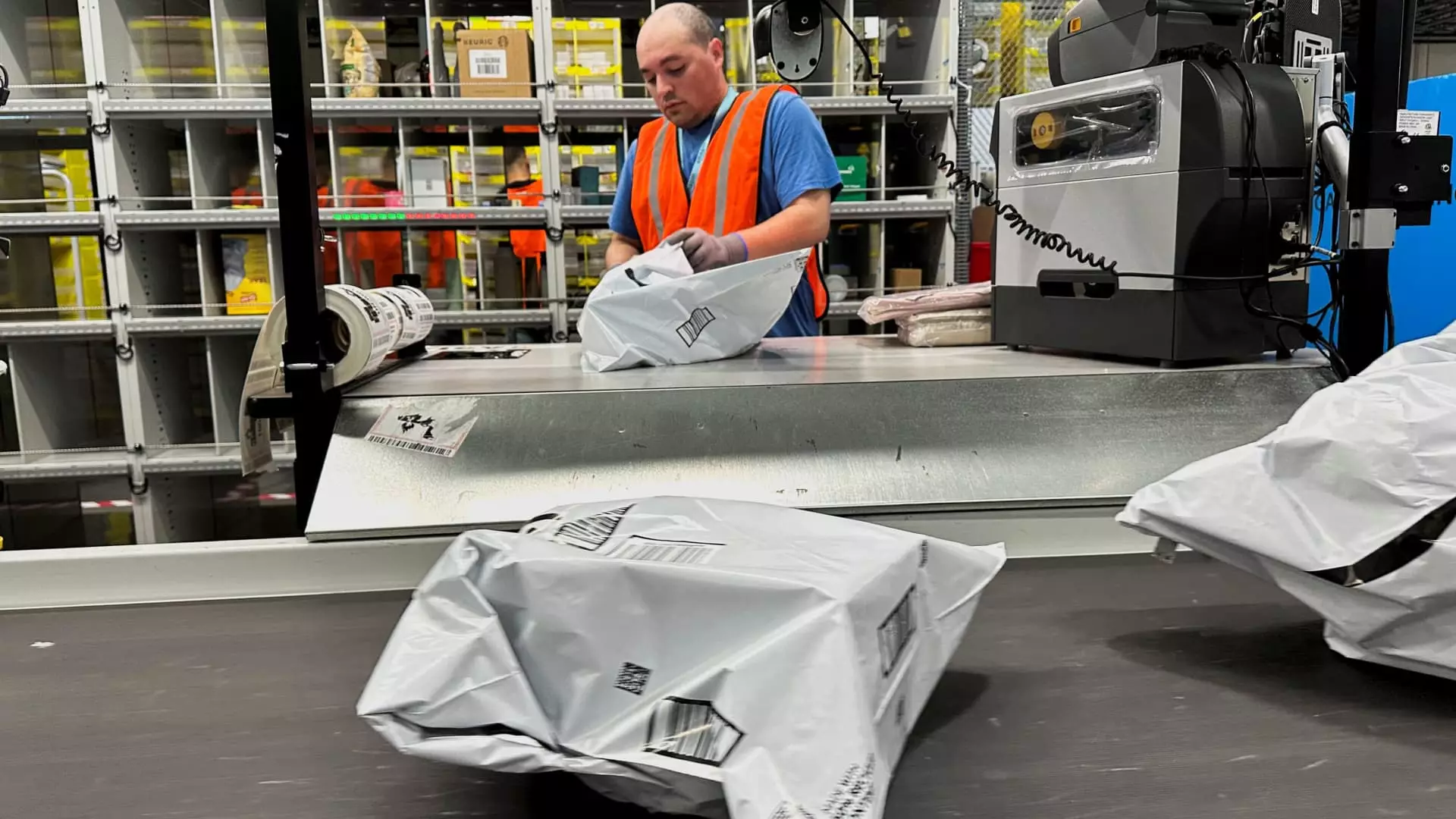In the complex web of global commerce, few events are as disruptive as a trade war. When President Donald Trump announced sweeping tariffs on Chinese imports, it felt like an alarm bell for countless small businesses that had built their operations on the premise of low-cost manufacturing. The plight of entrepreneurs, like Aaron Cordovez, is emblematic of a broader turbulence affecting countless sellers on Amazon’s third-party marketplace. This situation sharply underscores how government policy can dramatically reshape the entrepreneurial landscape, pushing businesses to their breaking point.
The statistics are startling. The average price of goods on platforms like Amazon saw a sudden spike of 29%, a significant leap that ripples through the consumer experience. We often think of e-commerce as a bastion of competitive pricing, yet the reality is that many merchants are caught in a vise grip: raise prices or absorb escalating costs, thereby diminishing already narrow profit margins. For a business that traditionally relied on small markups, this scenario is nothing short of existential.
The Cost of Survival: Tough Decisions Ahead
Consider Zulay Kitchen, a company that has thrived on accessible kitchen gadgets. When production costs surge and competition intensifies due to rising tariffs, decisions must be made. Cordovez indicated that he is contemplating a shift of manufacturing to alternative countries like India and Mexico. However, changing sourcing strategies is neither simple nor swift. It raises a pertinent question: How long until these shifts can stabilize pricing, and more importantly, how many jobs will be lost or created in the process?
The reality is harsh—Zulay has already felt the need to increase prices and lay off nearly 20% of its workforce in response to escalating costs. This is not an isolated incident but reflects a larger trend. For many sellers, the trade-off might mean reducing marketing budgets or slashing prices further, complicating their already precarious balance sheets. Economic policies designed to protect American interests often lead to unintended consequences for small businesses aspiring to compete in a global marketplace.
Consumers Face the Brunt of Unforeseen Costs
The impact of these tariffs reverberates beyond mere pricing adjustments. Consumers are now confronted with stark increases, such as Zulay’s milk frothers rising from $9.99 to $12.99—often without any parallel increase in perceived value. The fundamental question looms: Are consumers willing to tolerate these hikes? As Joe Stefani from Desert Cactus aptly pointed out, will shoppers spend $50 on a hat that once cost considerably less? The psychological reaction to such increases could trigger a cascade of decreased consumer spending, amplifying the challenges faced by small businesses.
The irony is palpable; in a bid to safeguard American jobs, policies aimed at protecting domestic companies may paradoxically threaten their very existence. When a consumer decides to withhold discretionary spending—such as purchasing a high-end kitchen tool or college merchandise—these choices reverberate through the economic ecosystem, potentially leading to further layoffs and financial strain among small retailers.
Market Fragility: Amazon’s Role in the Turmoil
Given its massive platform that accounts for about 60% of Amazon’s online sales, the vulnerability of third-party sellers is especially concerning. Andy Jassy, Amazon’s CEO, expresses a dedication to sustaining low prices, yet he acknowledges that some businesses will inevitably pass on tariff costs to consumers. This leads to a critical reflection on Amazon’s influence as a marketplace. While it thrives on having an extensive array of offerings, it also plays a pivotal role in determining the fate of its small sellers.
With over 900 products noted for price inflation within a short span, companies are facing pressure not just from tariffs, but from competition that doesn’t necessarily adhere to the same cost structures. The marketplace’s structure highlights an urgent need for reforms—be it through renegotiating supplier terms or implementing better support systems for entrepreneurs facing sudden surges in operational costs.
A Looming Crisis that Demands Attention
If tariffs remain elevated, the future appears bleak for many small businesses. Disruptions on the scale of tariffs can lead to a loss of innovation and entrepreneurship—a disturbing concept for a country that prides itself on being the land of opportunity. The government’s effort to foster a more robust domestic economy directly contradicts the spirit of entrepreneurship, needed to drive growth in a post-pandemic world.
Changing manufacturers or absorbing costs is no small feat for small businesses, especially those already stretched thin. The need of the hour is a comprehensive approach, one where the government considers the long-term consequences of its actions on small entrepreneurs. As the trade negotiations evolve, the stakes are perhaps more critical than perceived—this is not just about tariffs, it’s about the very fabric of American enterprise.

